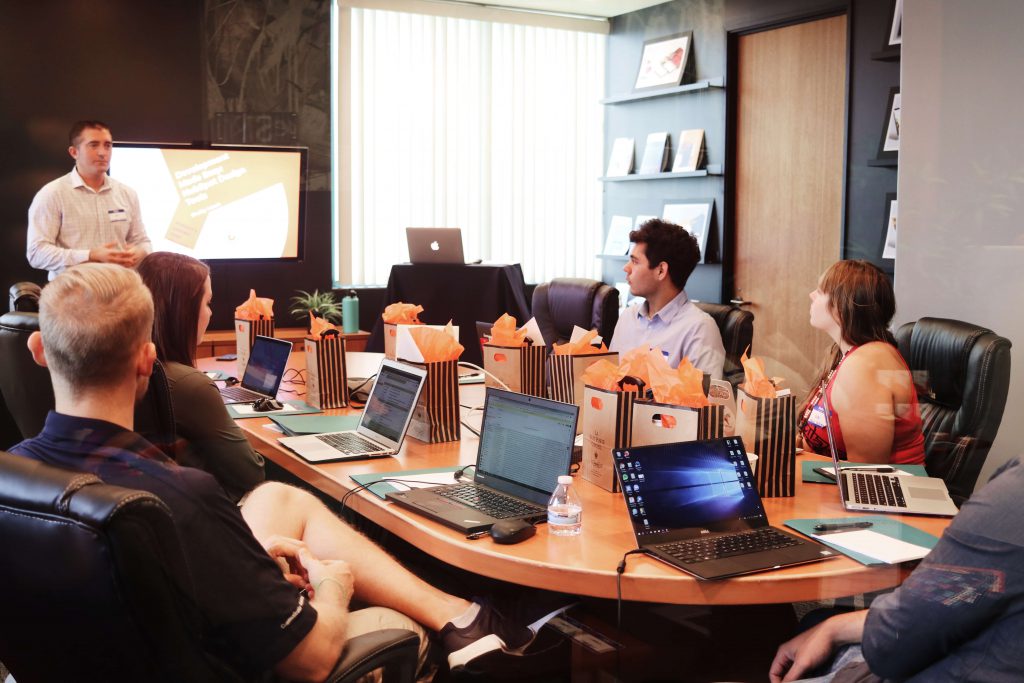Training is not a one-time exercise with group leaders. It is one among many facets of how you provide ongoing care and development for your leaders. This is important to remember as you look ahead to the fall and consider how you want to equip your leaders to start and stay strong with their groups.
How you train depends on who you’re training. For pre-existing leaders, it’s more about connecting with other leaders, celebrating Kingdom wins, and delivering targeted training with an inspirational element. For new leaders, the training component would be more intensive, ensuring everyone is equipped, clear, and excited about their next steps. Another whole article could be devoted to how you choose to identify, invite, interview (screen), and initiate new group leaders – all of which will influence how you train new leaders.
There are two general pathways: Initial orientation and ongoing equipping (leadership communities) and here are the suggested topics you could cover with each:
| Initial Orientation (Greater frequency, smaller gatherings) | Leadership Communities (Less frequency, larger gatherings) |
| * Why Groups? (biblical references & benefits) * How Groups Support Your Church’s Vision (Dream) & Mission (Purpose) * What’s a Group? (definition, types, etc.) * Role & responsibilities of a Group Leader * Group leadership (reporting) structure & how groups are organized at your church * Leadership Investment Rhythms (how leadership & resources will help you) * Best practices for well-rounded group life * Guidance for your first gathering * How your group can be missional & transformational * Introduce to their coach/community leader * Q&A | * Welcome & prayer * Connecting with other leaders (include food) * Optional: Fun element (ice-breaker type game / mixer) * Appreciation (share a life-change story) * Inspiration (how your achieving your church’s vision) * Value-adding skill development (determined by feedback from leaders) * Sub-group by “coach-leader” relationship or affinity for more specific / relevant conversations * Regroup for final announcements & next steps |
A third option is “turbo groups.” This is a short-term group experience designed to build relationships and leadership among participants, each of whom start with the expectation they will launch out and lead their own group. (The list of topics covered under “Initial Orientation” can serve as an outline for a turbo group, an example of which is available through Christianity Today’s smallgroups.com HERE.) This can be a first step toward developing a core team that will ultimately serve the growing body of groups at your church.
Lastly, there are three keys to success to keep in mind as you’re planning your equipping experiences:
- Awareness over Assumption –Don’t assume you know what your leaders-in-training need. Survey the people you plan to invite before you invite them and find out what would make your training timely, relevant, and most meaningful to them. The best experience for participants is when they walk away with their felt-needs addressed and burning questions answered.
- Interaction over Information – Reserve your training time to engage and talk with participating leaders and promote peer-learning through conversation versus unilaterally dispensing information in a lecture format that you could alternatively convey digitally so they can refer back to it repeatedly and customize it for future use.
- Rhythmic over Sporadic – It instills confidence in your leaders when you preplan predictable rhythms for initial orientations and leadership communities. Think through how to thread training throughout the ebb and flow of your church’s unique family and ministry calendar. Schedule a full year’s worth and then communicate all of your dates together with a clear explanation of why it’s important they’re a part of leadership gatherings. At my church, we offer new leader orientations every month and leadership communities for active leaders every other month.
One of things I’ve learned to stress with leaders, especially as they get started, is the importance of communicating with the person who looks after them (e.g. a “coach” or “community leader”) and staying connected with the larger community of leaders at your church. The foundation for this to happen consistently begins with monthly “connects” between coaches and their group leaders, which can happen in the way that’s most convenient for your leaders.
Plan ahead and create predictable leadership equipping rhythms that provide on-ramps and touch-points to ensure everyone continues to run healthy and strong. This fall can serve as the entry-point for leaders to connect with one another and plug into a larger system for ongoing care and development of all of your leaders!





